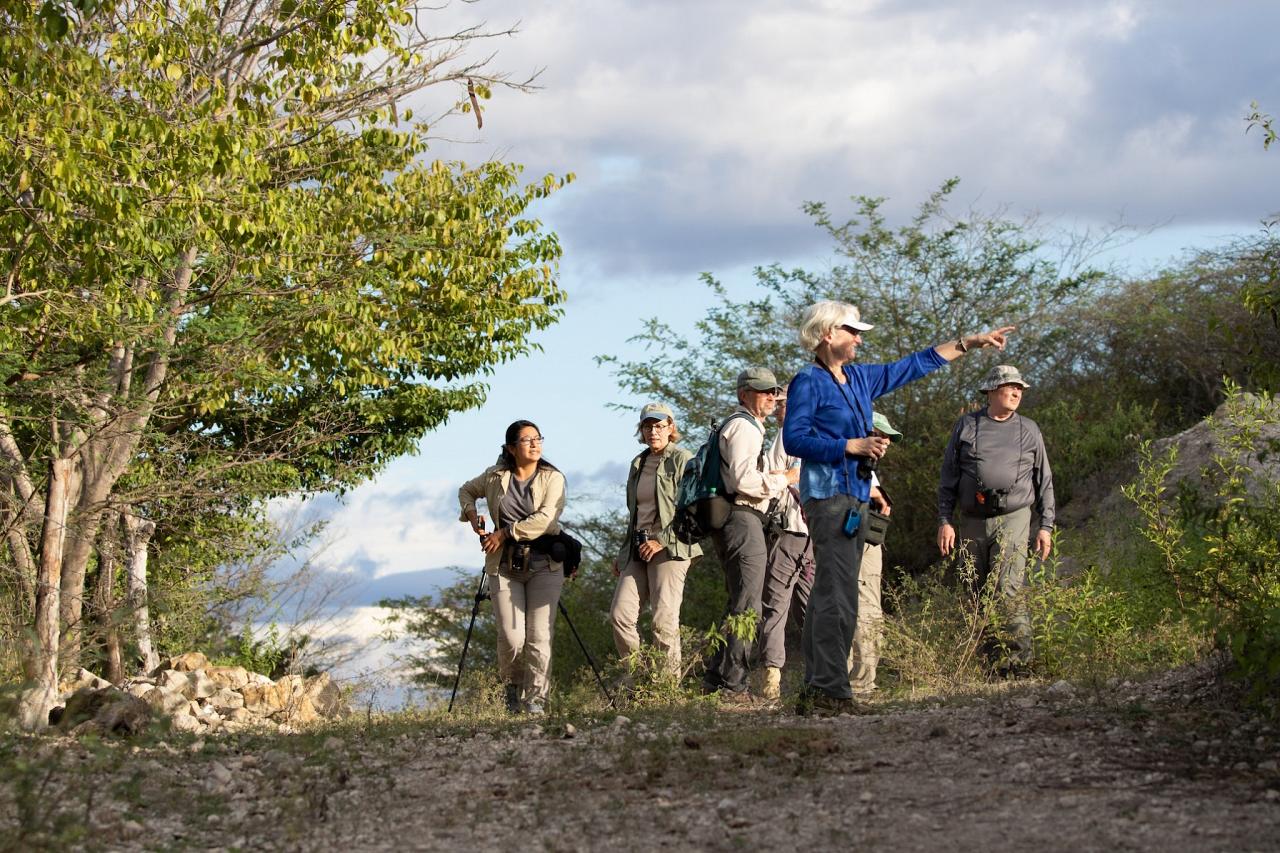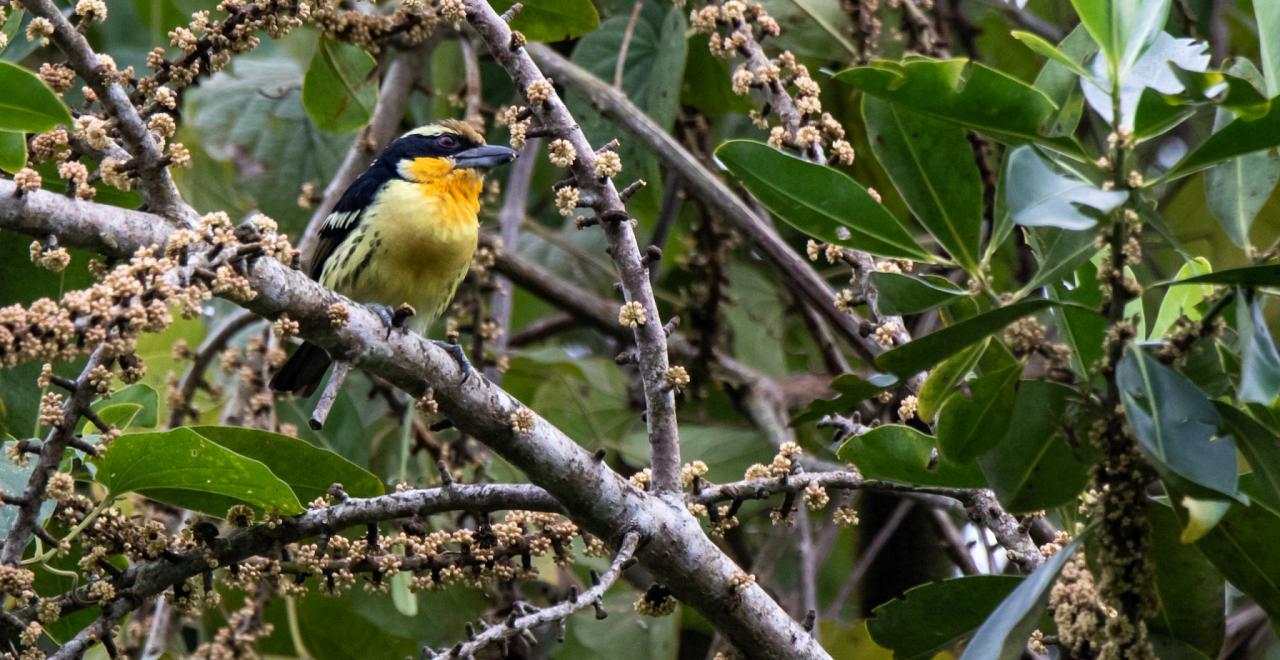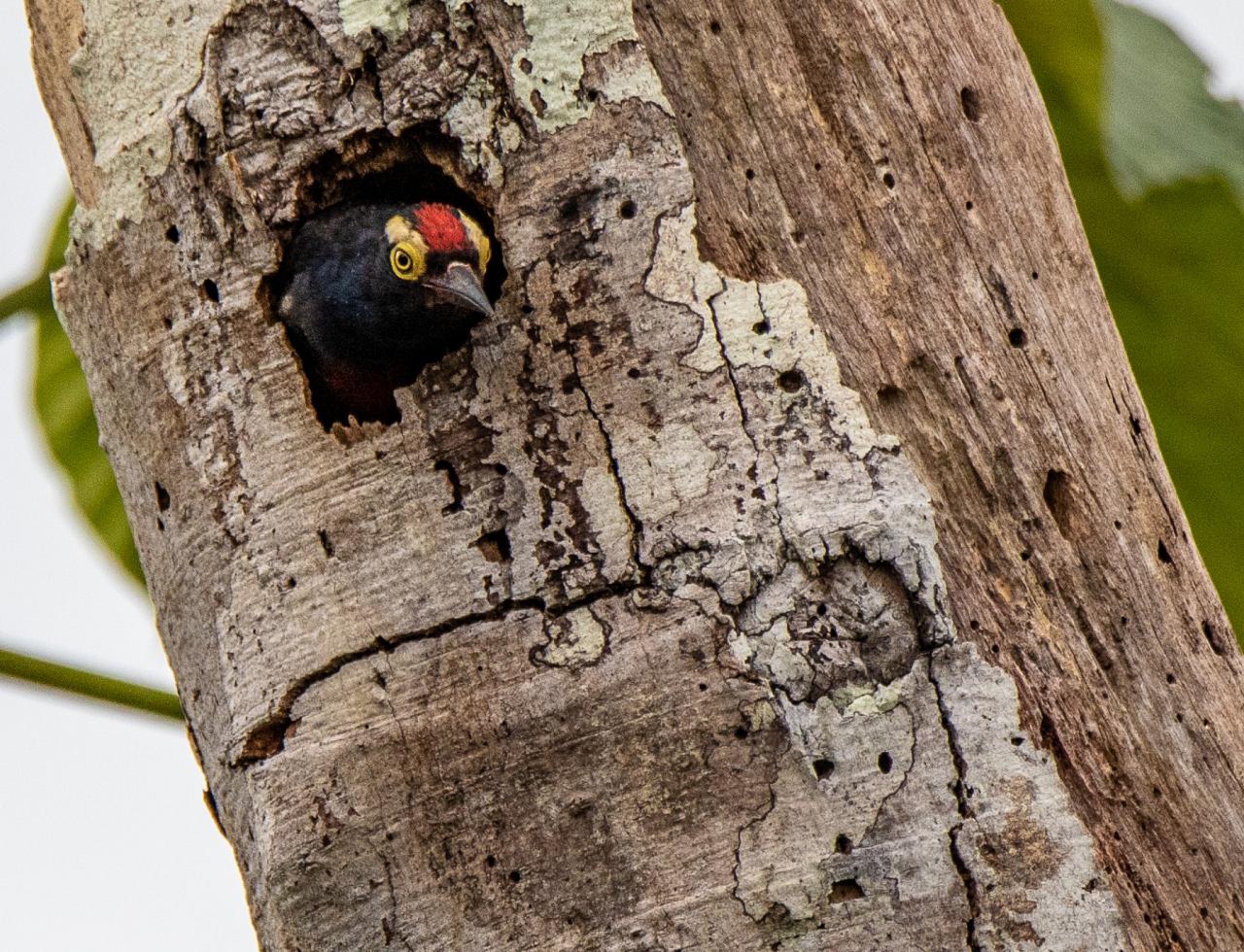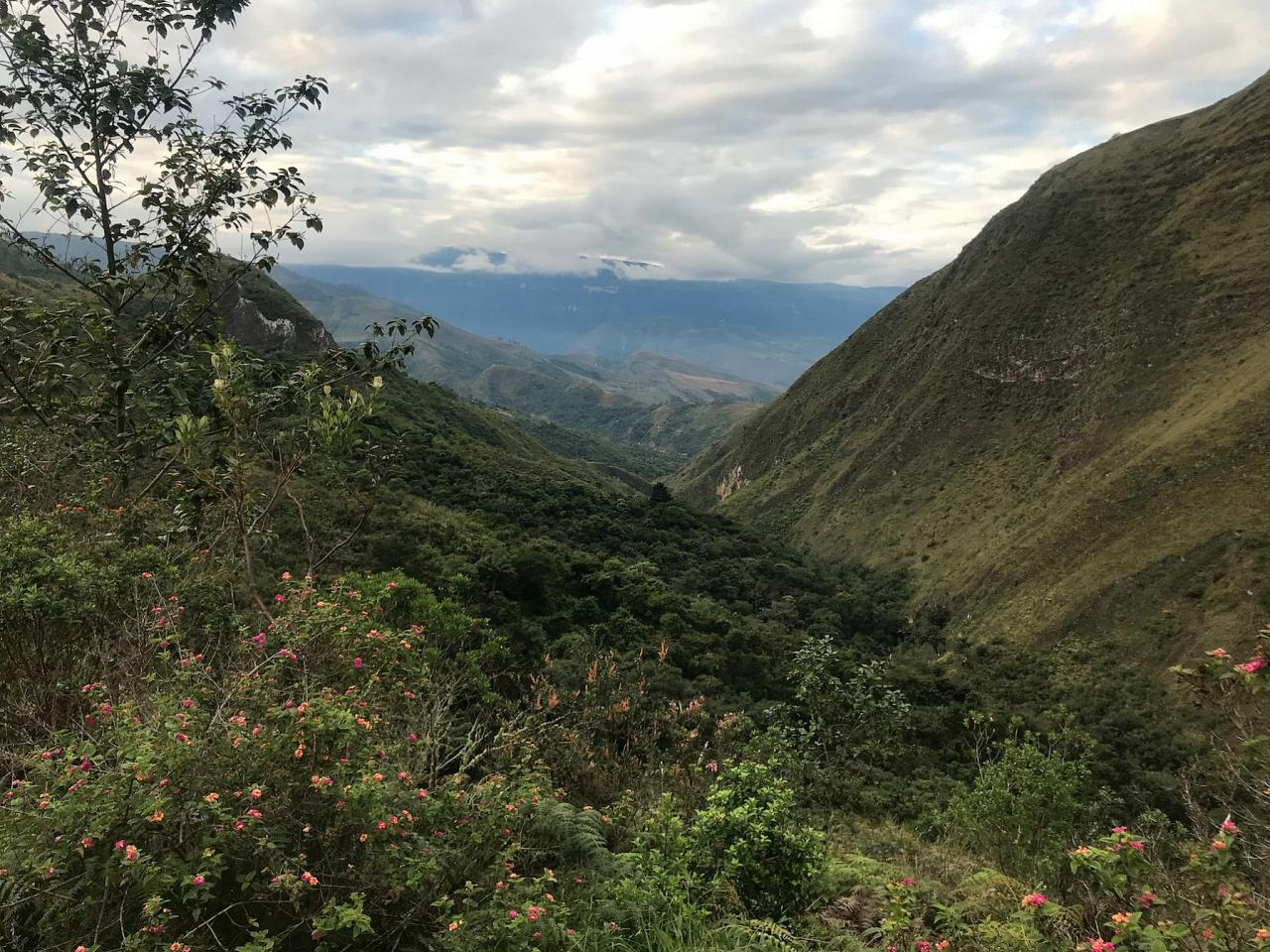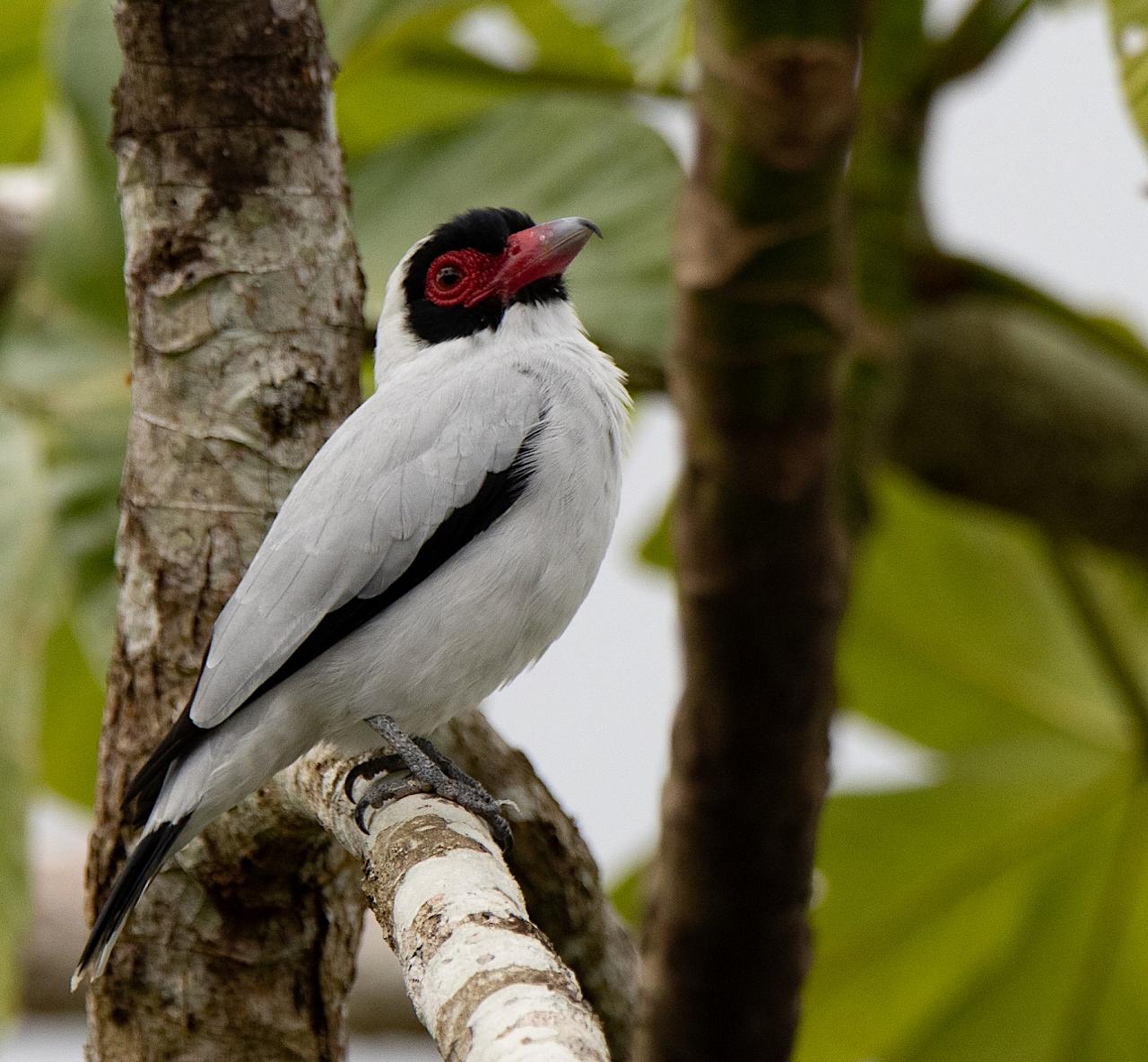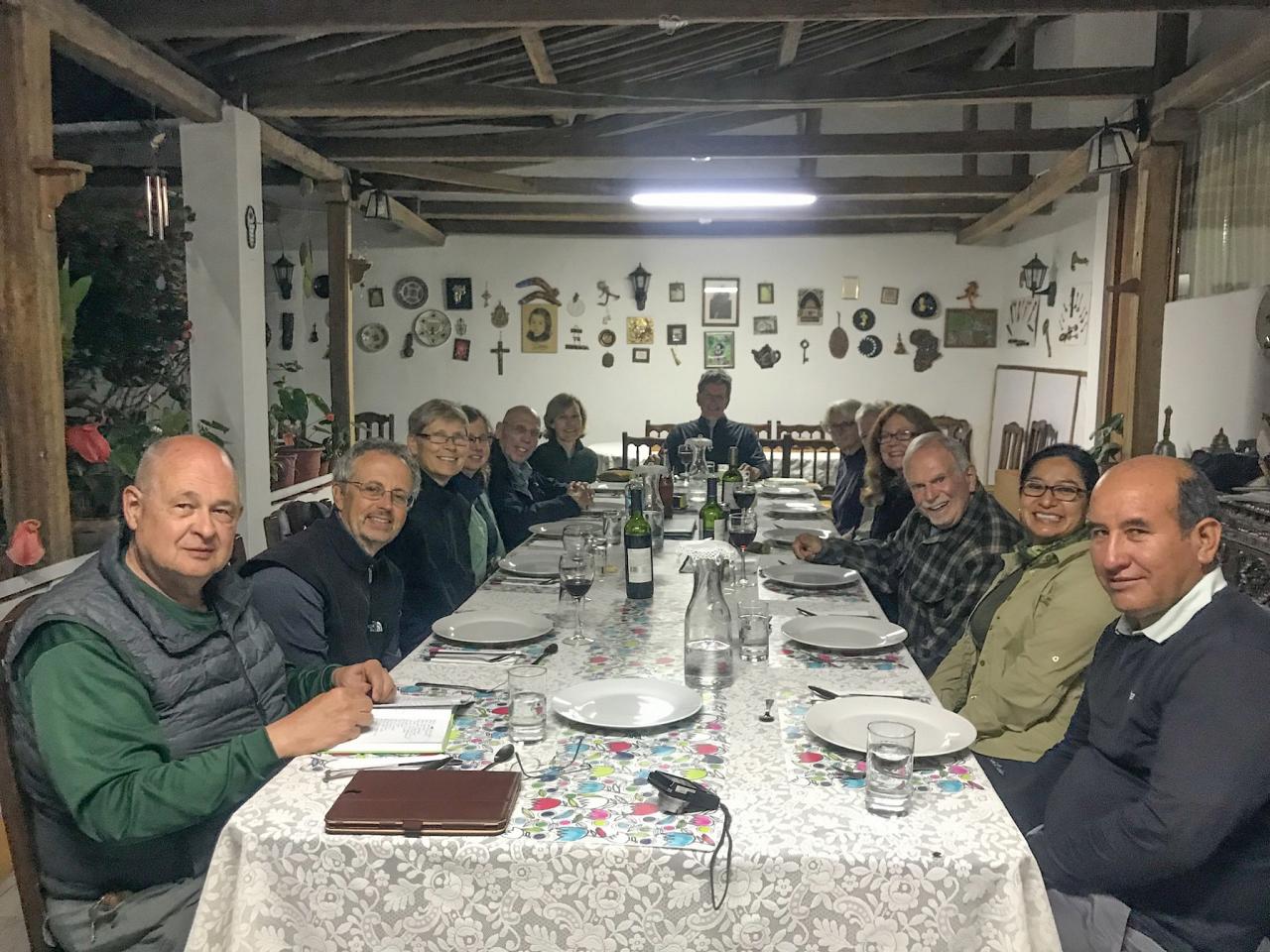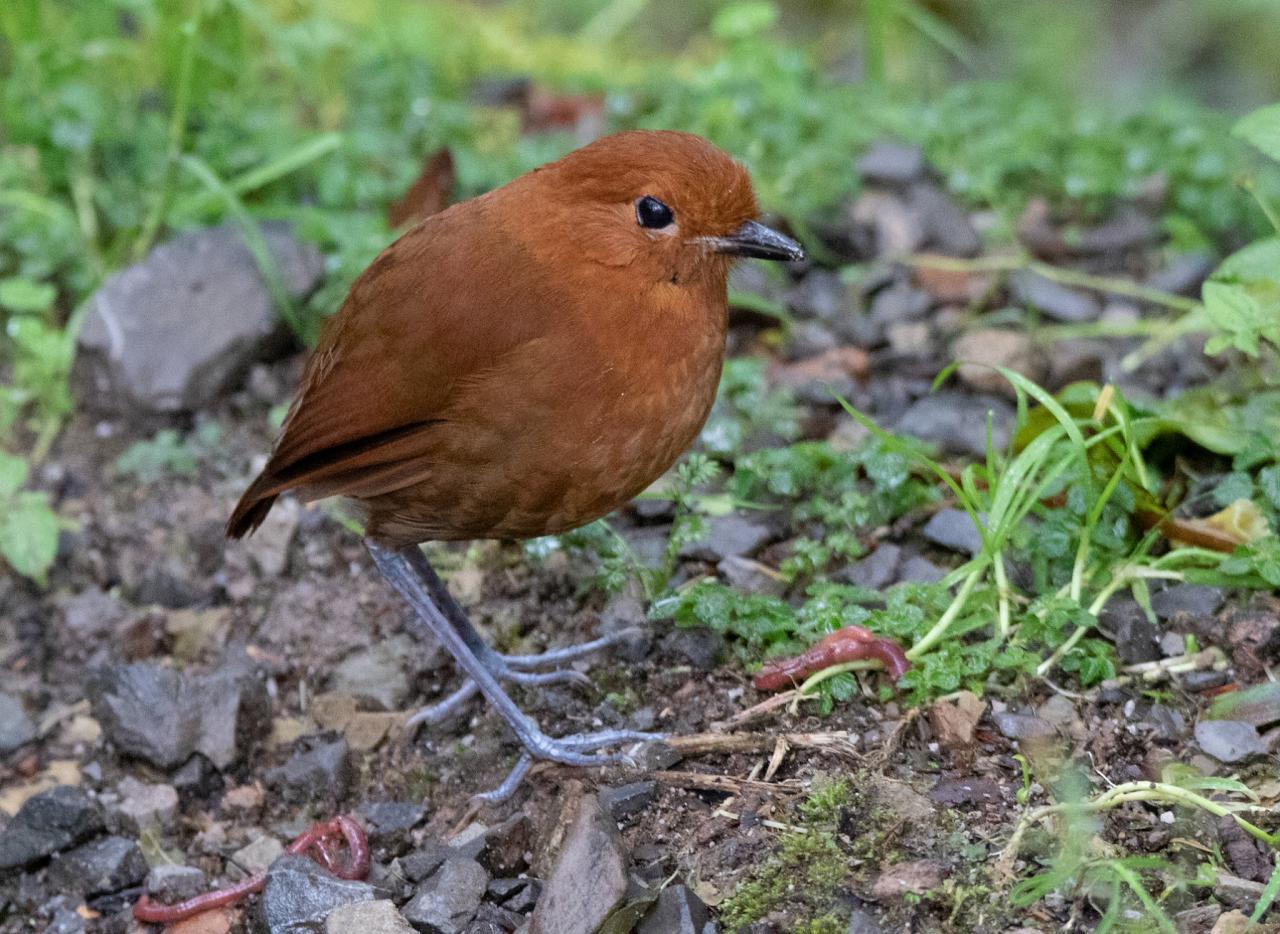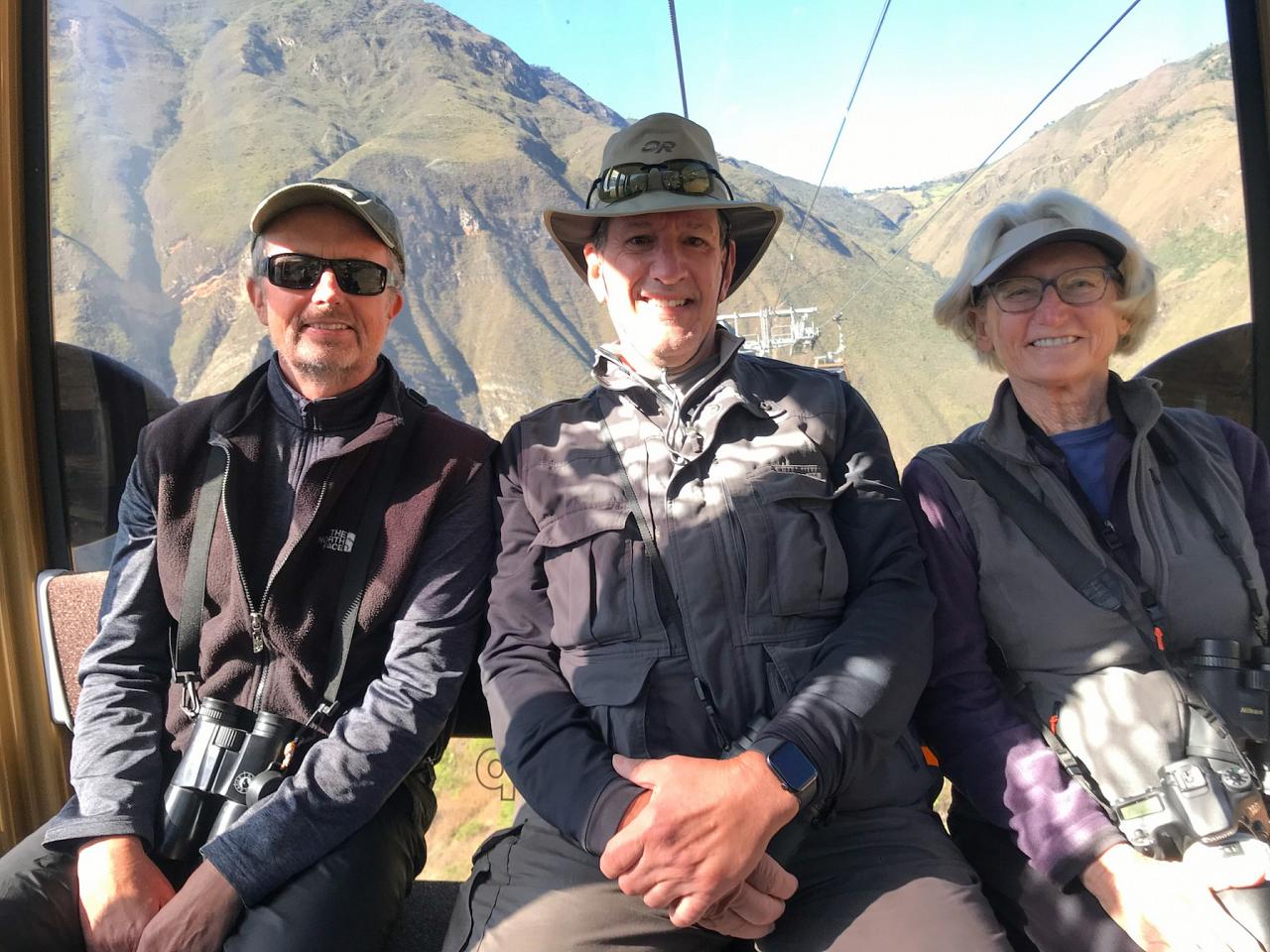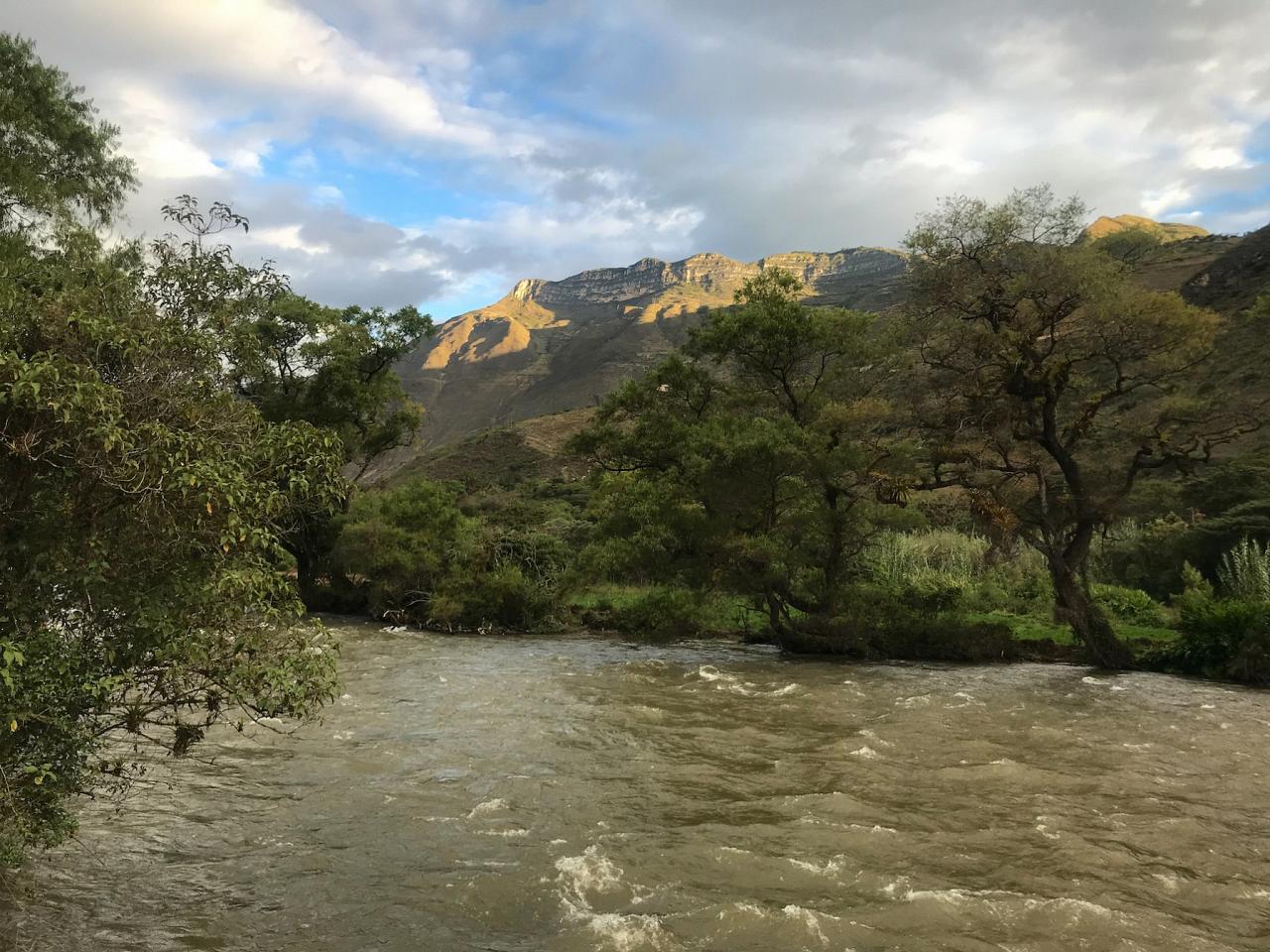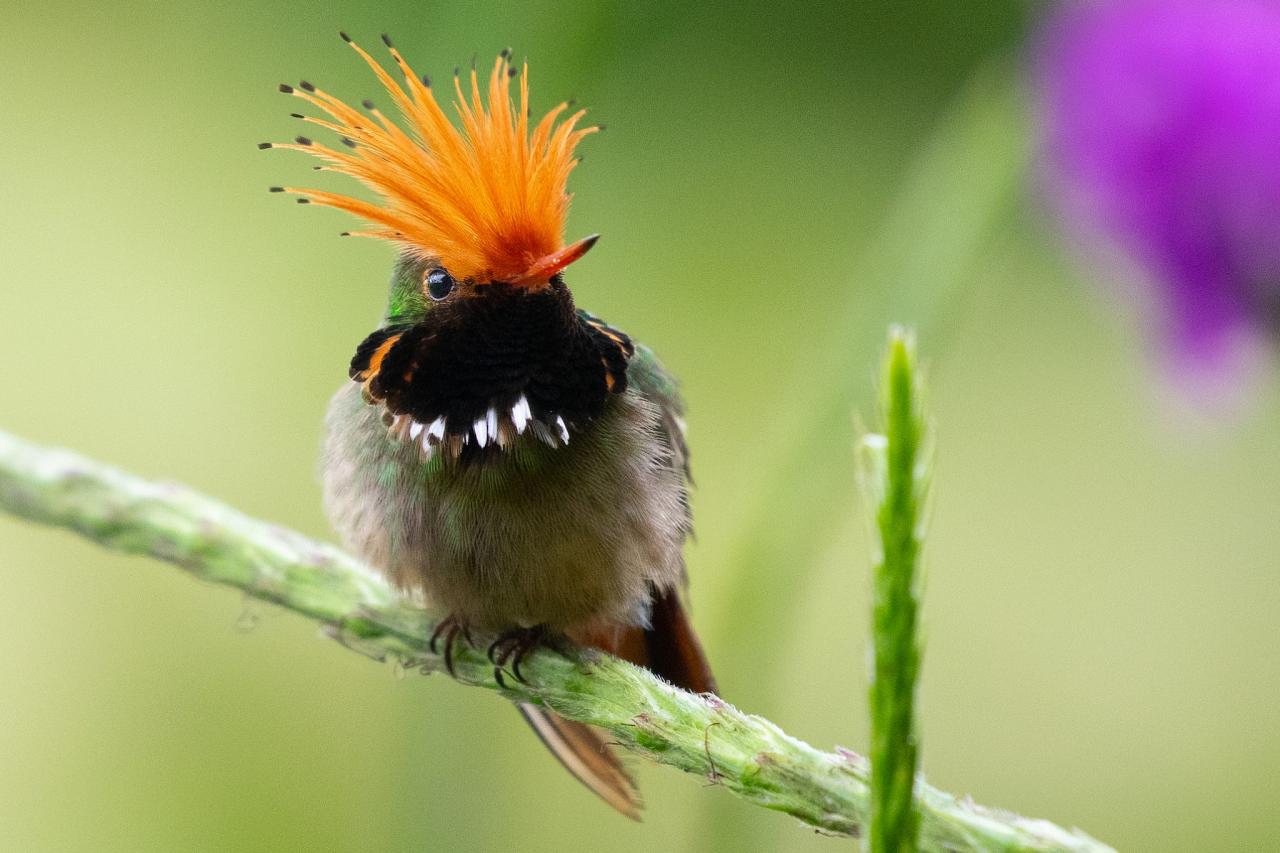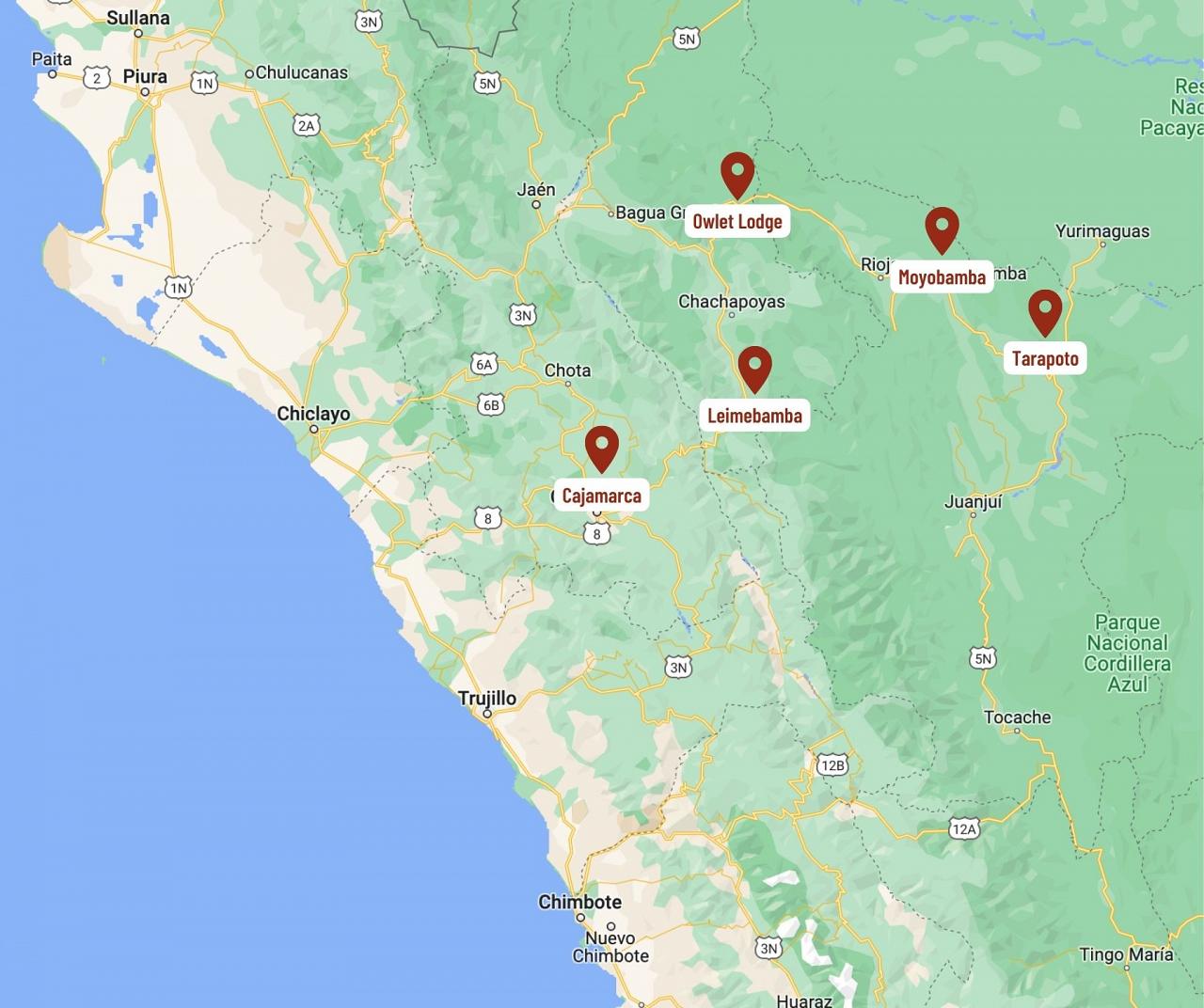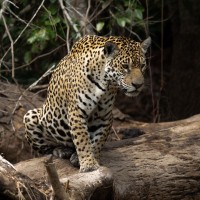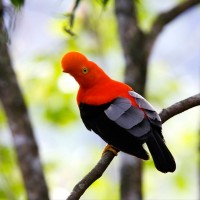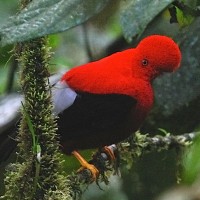- Overview
- Full Itinerary
- Extensions
- Photo Gallery
- Costing
- Travel Details
- Trip Reports
- Map
- Know Before You Go
- Other Trips You May Like
Explore Northern Peru on this Naturalist Journeys tour, a jigsaw of Andean mountains and deeply sliced canyons, for a treasure trove of landscapes and birds. Recent upgrades in infrastructure and new lodges have opened up this region as a major birding destination that can be explored in relative comfort. This tour supports local communities as they develop viable ecotourism in the area. The isolating effects of the jagged Andes are nowhere more apparent than in northern Peru, where the dramatic topography creates extreme habitat contrasts —from tropical rainforests and arid valleys to high paramo and lowland swamps. On this tour, we visit habitats ranging from arid scrub to lush cloud forests laden with verdant mosses and exquisite orchids. We look for the near-mythical Long-whiskered Owlet as well as Marvelous Spatuletail, arguably the most beautiful hummingbird in the world.
We start in the eastern foothills of the Andes in the Mayo Valley, low enough in elevation to host many Amazonian bird species but high enough to have comfortable overnight temperatures. Here, we look for a variety of barbets, fruiteaters, toucanets, and tanagers. En route to our next lodge, we stop a roost cave for enigmatic nocturnal, fruit-eating Oilbirds, then have three nights each at two beloved birding lodges. From here we turn south down the scenic Utcubamba River valley, where we learn about ancient cultures while birding and exploring, and we cap off the experience with a final night in the lovely city of Cajamarca after a stunning drive through the Andes. The colonial city of Cajamarca, where centuries ago Pizarro captured Atahualpa, the last Inca emperor, is a great place to see Inca remains and learn about Peruvian history. We have added a day to the trip this year, to ease our pace and have time for all the amazing species!
Come early to enjoy beautiful coastal birding, including a boat tour, of coastal Lima, and stay on for Machu Picchu, a bucket-list extension if ever there was one!
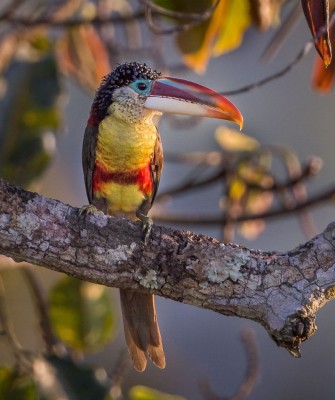
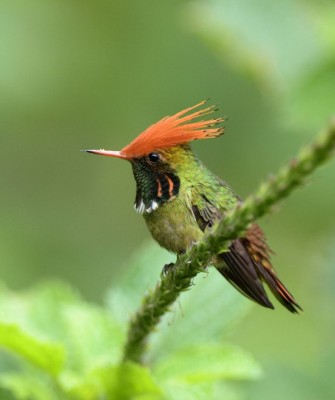
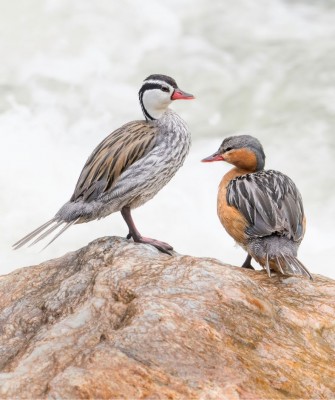
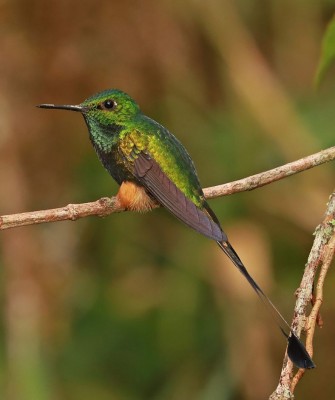
Tour Highlights
- Observe the stunning Marvelous Spatuletail, arguably the most beautiful hummingbird in the world, along with over 40 other species including Royal Sunangel, Rainbow Starfrontlet, and Emerald-bellied Puffleg
- Sample Peru’s culinary delights, now famous around the world, such as chicha morada and causa rellena
- Drive the scenic Utcubamba River Valley; learn about ancient cultures at Leymebamba
- Spend three nights each at two famous birding lodges; Waqanki and Owlet where we find a host of Peruvian endemic species
- Seek the Long-whiskered Owlet, a mythical denizen of stunted high elevation forest, first mist-netted on the night of August 23, 1976
- Immerse yourself in dramatic Andean landscapes, from arid valleys to lush cloud forests
- Choose our pre-tour extension to bird coastal Lima, with chances for Humboldt Penguin, among many other sea-loving birds.
- Stay on to explore Peru's cultural crown, Machu Picchu, Lost City of the Incas, and take a guided tour of Cusco, a Colonial jewel set in a lovely high Andean valley.
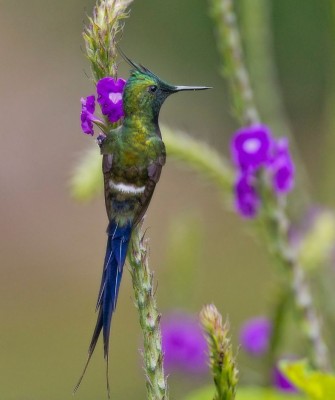

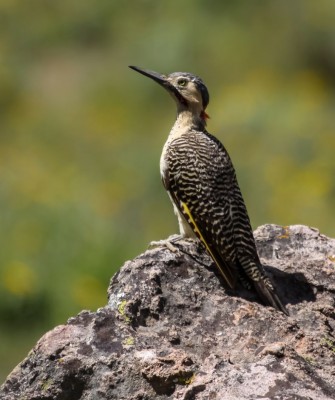
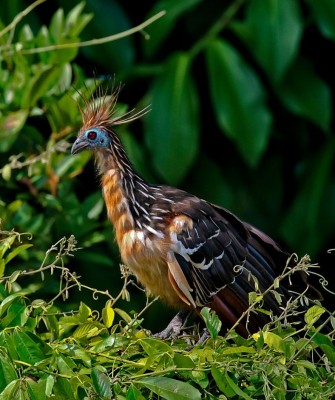
Trip Itinerary
Itineraries are guidelines; variations in itinerary may occur to account for weather, road conditions, closures, etc. and to maximize your experience.
Fri., July 5 Arrivals in Lima, Peru
Welcome to Peru! After arriving at the international airport in Lima and passing through immigration and customs, the first night’s hotel is just across the street, so there is no need for a shuttle—just a simple walk across the median and you can check in! Dinner tonight is at the hotel and is a great chance to meet up with your guides and travelling companions.
Accommodations at Costa del Sol, Lima airport (D)
Sat., July 6 Flight to Tarapoto | Local Birding
After a morning breakfast we will walk across the street to board our domestic flight from Lima to Tarapoto city, which leaves at 9:55am arriving to Tarapoto at 11:20. Arriving at Tarapoto, we will check in the hotel, enjoy lunch, and get ready for the afternoon birding activities. We jump right in with birding at Ricuricocha Lagoon, where possible birds include Black-bellied Whistling Duck; Comb Duck; Speckled Chachalaca; Least Grebe; Great Egret; Limpkin; Striated & Cocoi Heron; Pearl & Snail Kite; Purple Gallinule; Wattled Jacana; Blue Ground-dove; Canary-winged Parakeet; Red-stained Woodpecker; Straight-billed Woodcreeper; Barred Antshrike; Rusty-fronted Tody-flycatcher; crakes & rails.
Dinner is back at our hotel, where over happy hour we typically tally up our sightings.
Accommodations at Tucan Suites Hotel (B,L,D)
Sun., July 7 Full Day Tarapoto Area | Yurimaguas Road - Cordillera La Escalera
Breakfast is at our hotel and then we are off for a full morning birding the tunnel area along the Tarapoto-Yurimaguas Road, a very productive birding site around Tarapoto that climbs (by road) to the summit of La Escalera (or staircase) in the Cordillera Escalera. Its elevation gradient offers a mix of lowland and foothill species, being a particularly good site for the widespread yet scarce Dotted Tanager—most likely found by checking fruiting Cecropia trees. We may also find Purplish Euphonia, Andean Cock-of-the-Rock and Blackish Pewee. After lunch we spend some time at fantastic hummingbird feeders at Aconabikh where the endemic Koepcke's Hermit and stunning Gould's Jewelfront may occur.
Accommodations at Tucan Suites Hotel (B,L,D)
Mon., July 8 Quiscarrumi Bridge | Moyobamba
After an early breakfast, we head to Moyobamba via Quiscarrumi Bridge where we stop to see Oilbirds—an enigmatic bird species that feeds on oily fruits. It is it the only nocturnal fruit eating bird in the world. The huge cave where they roost is right on the edge of the highway!
We have lunch at a local reserve along the way and arrive in time for some great birding right on the grounds of Waqanki, often the favorite lodge of our trip. Tall trees surround the property, and a flowering hedgerow outlines the path from our cabins to the dining area, often frequented by hummingbirds. Enjoy dinner hosted by this gracious family and a chance to tally up our sightings.
Accommodations at Waqanki Lodge (B,L,D)
Tues., July 9 Waqanki Lodge
After breakfast we spend a full morning birding at the very special Waqanki Reserve, a private family-owned site in the foothills of the eastern Andes of northern Peru. The reserve includes a lodge, orchid gardens, hummingbird feeders, an observation tower, and an extensive network of trails through foothill forest. Over 20 species of hummingbirds have been recorded here, including the stunning Rufous-crested Coquette and Wire-crested Thorntail. Other locally important species protected within the borders of this reserve include Bluish-fronted Jacamar, Gilded Barbet, Mishana Tyrannulet, Black-and-white Tody-Flycatcher, and Black-bellied Tanager.
In the afternoon, relax and enjoy the grounds, or venture out to Morro de Calzada, a newly opened National Park with excellent birding and a chance to see Saddle-backed Tamarin. Dinner is at the lodge.
Accommodations at Waqanki Lodge (B,L,D)
Wed., July 10 Hotel Grounds & Nearby Lakes
This morning we venture out to explore local lakes, wetlands and small creeks nearby at the Santa Elena Ecological Reserve, adjacent to the Tingana Reserve. Look for kingfishers, Black-crowned Night-Heron, Russet-crowned Crake, Common Gallinule, Oriole Blackbird, Green-backed Trogon, Blue-crowned Trogon, Violaceous Jay, Bluish-fronted Jacamar, Channel-billed Toucan, Chestnut-eared Aracari, Yellow-tufted Woodpecker, Crimson-crested Woodpecker, Lineated Woodpecker and more. We return for lunch to Waqanki Lodge.
During the afternoon watch birds in detail and this also gives our photographers to time to capture hummingbird images. The hummers are fantastic at Waqanki where feeders often attract up to 18 species in a day; one of the highlights is Rufous-crested Coquette. Birding is excellent around the lodge and several trails are there to explore.
One of our evenings at Waqanki, we have the chance to go owling. Tarapoto city is good for owls and nightjars; some possible species are Subtropical Pygmy-Owl, Spectacled Owl, Vermiculated Screech-Owl, Band-bellied Owl, Stygian Owl, Spot-tailed Nightjar, Rufous Nightjar and Little Nightjar.
Accommodations at Waqanki Lodge (B,L,D)
Thurs., July 11 Reserva Arena Blanca-Aguas Verdes | Owlet Lodge | Abra Patricia
We leave Waqanki Lodge after an early breakfast, making our on the way to see the marvelous gardens at Reserva Arena Blanca-Aguas Verdes where there are blinds set up to observe wood-quail and a multitude of hummingbird feeders. A local resident has set up a creative feeding station where we hope to see Little Tinamou and perhaps Rufous-breasted Wood-Quail.
From a raised garden platform, we are surrounded by hummingbirds and may see Rufous-crested Coquette, Golden-tailed Sapphire, Wire-crested Thorntail, Booted Racket-tail, and Fork-tailed Woodnymph. Black-bellied Tanager is fairly common as well.
After enjoying lunch at this fantastic birding spot, we continue westwards, making stops along the way as the road climbs steadily into the Andean cloud forest, until we reach a pass at 2,300m (7,546 ft). This is where the Alto Nieva Private Reserve, familiar among birders as a site for some highly prized species, most notably the Long-whiskered Owlet, is located. Our accommodation is at Abra Patricia Private Conservation Area, where our accommodation – Owlet Lodge – is situated. Rooms are spacious and welcoming. Bring your fleece – it’s cool to cold up in the mountains!
Accommodations at Owlet Lodge (B,L,D)
Fri., July 12 Owlet Lodge
Created by the Ecoan Foundation, Owlet Lodge protects the main site for the fascinating Long-whiskered Owlet, a species rediscovered after 35 years of remaining undetected. It is one of the smallest owls in the world, about the size of a clenched fist, and incredibly camouflaged to blend in with the brown wood and lush moss of its habitat. We search for this mythical bird one evening of our stay at this conservation lodge, on an optional and fairly steep hike of several hours.
We have the full day today to explore in and around Abra Patricia, one of Peru’s premier birding sites, with multiple trails and observation points accessible by foot or a short drive away. The vegetation of the cloud forest is fascinating as well. Owlet Lodge also has some amazing hummingbird feeders! Meals are at the lodge in view of these feeders. Highlights include Swordbill Hummingbird and Long-tailed Sylph, a host of colorful tanagers, and more.
Some other possible birds we may see on the property today include: Chestnut, Ochre-fronted, Rusty-tinged & Rusty-breasted Antpittas; Black-throated & Lulu’s Tody-Tyrant; Flame-faced, Saffron-crowned, Metallic Green, Yellow-scarfed, Grass Green, Red-hooded & Silver-backed Tanagers; Green, Black, Scaled & Scarlet-breasted Fruiteaters; Sickle-winged Guan; Ecuadorian Pied-tail; Golden-headed Quetzal; Ornate Flycatcher; Johnson’s Tody-Flycatcher; Speckle-chested Piculet; Grey-tailed Piha; Crimson-bellied & Crimson-mantled Woodpeckers; Variable Antshrike; Yellow-cheeked & Barred Becards; Pale-eyed Thrush; Blue-winged & Lacrimose Mountain-Tanagers; Bluish, Masked & White-sided Flowerpiercers. Wow!
Accommodations at Owlet Lodge (B,L,D)
Sat., July 13 Huembo Lodge | Owlet Lodge
This morning we will visit another Ecoan Foundation project, Huembo Lodge. Huembo is part of a vital conservation project which our visit helps to support. It’s about an hour drive but well worth it to enjoy time at an area full of hummingbird feeders, probably the world’s most reliable site to see the Marvelous Spatuletail. Some of our past travelers say this one bird was worth the whole trip! In addition to this especially attractive species, we should also see several other stunning hummingbirds at the feeders and along the trails of our lodge such as Little Woodstar, Chestnut-breasted Coronet, Violet-fronted Brilliant, and Bronzy Inca. Other typical forest species that can be found here include Andean Guan, Silvery Tanager, Blue-capped Tanager, and Mitred Parakeet.
In the afternoon, as we return, we stop in at a neighboring area great for finding the elusive Royal Sunangel and many other species.
Accommodations at Owlet Lodge (B,L,D)
Sun., July 14 Utcubamba River Valley | Leymebamba
After breakfast, we drive further up the scenic Utcubamba River Valley, following the river to the peaceful town of Leymebamba, a small town at 2,300m (7,500 ft) on the route southwards towards the Andean town of Cajamarca, and onwards to the coast. On our drive to Leymebamba Valley we pass the turn off to Kuelap Archaeological Site (mostly closed for renovation and stabilization thus not on our itinerary this year but we’ll share the story of this historic site.
In the afternoon, visit the fabulous Leymebamba Museum where collections from the excavations at Laguna de los Condores are stored, giving us insight into Kuelap and its story. Next door we visit feeders and have coffee to relax and admire multiple species of spectacular Andean hummingbirds such as Sparkling Violetear, Rainbow Starfrontlet, Shining Sunbeam, and Sword-billed Hummingbird.
Our hotel tonight is in a small town, with gracious hosts that welcome us for a home-cooked, authentic local meal. Wander down to the plaza, where there is likely to be a band and a dance, and you have the chance take in a bit of local color.
Accommodations at Casona Leymebamba (B,L,D)
Mon., July 15 Leymebamba | Local Birding
This morning, we head up in elevation to upper montane forest off the road to the Lake of the Condors in order to look for several new species: Andean Flicker, Gray-breasted Mountain-Toucan, Andean Goose, Black-chested Buzzard-Eagle, Andean Condor, and more. Walk a picturesque mountain valley with an eye out for condors overhead. We enjoy our picnic lunch in the middle of the picturesque Andean landscape and search a nearby fast flowing river for White-capped Dipper and Torrent Duck.
Accommodations at Casona Leymebamba (B,L,D)
Tues., July 16 Birding the Scenic Route from Leymebamba to Celendin
Early morning, after breakfast, we bird our way through surrounding areas making our way towards the city of Cajamarca further west and high up into the mountains. We start at Las Balsas on the way to Limon, where we have the chance for four endemics of the region, such as Buff-bellied Tanager, Grey-winged Inca-Finch, Chestnut-backed Thornbird and Marañon Thrush. A bit further we shall look out for flocks of Yellow-faced Parrotlet and scattered Buff-bridled Inca-Finch and Peruvian Pigeon.
After lunch in a local restaurant, we reach Celendin, where White-tailed Shrike-Tyrant Plain-tailed Warbling-Finch, Rufous-eared Brush-Finch and Black-crested Tit-Tyrant and the Cajamarca subspecies of Rufous Antpitta are possible.
Accommodations at Villa Madrid (B,L,D)
Wed., July 17 Celendin to Cajamarca
We bird our way to Cajamarca today, making stops for scenery and of course, more birds.
Our hotel tonight is in this historic city, and we have the chance to explore a bit as we settle in.
Accommodations at Costa del sol Cajamarca, Cajamarca
Thurs., July 18 Departures
We end our trip with a full morning to explore the beautiful historic city of Cajamarca, the last Inca Capital where Atahuallpa (The last Inca king) was captured and eventually executed by the Spaniard. There are still some remains of his palace and the rooms where all precious metals from all over the Empire were collected by Atahuallpa to pay this ransom to regain his freedom.
We aim to take a late afternoon flight to Lima to connect with outgoing international flights for those on the main tour only. For those on the extension, enjoy a transition night at the handy Costa del Sol airport hotel and a morning flight on to Cusco (included in the Machu Picchu Extension cost). (B,L)
Lima Coastal Birding Pre-Tour Extension
Itineraries are guidelines; variations in itinerary may occur to account for weather, road conditions, closures, etc. and to maximize your experience.
Wed., July 3: Arrivals
Arrive today at your leisure and rest up before an early start tomorrow. Dinner is on your own tonight.
Accommodations at Costa del Sol
Thurs., July 4 : Pucusana Fishing Village & Boat Trip | Villa Marshes & Lagoons
Those arriving early have a chance to join an optional extension to Pucasana, a fishing village where offshore islands are likened to a mini-Galapagos, with seabirds and Humboldt Penguins.
We wake early to be on our way ahead of city traffic. Our first stop is a mirador (a look out) on the coast with views back to the city. Water currents dictate activity, and at times there are clouds of Peruvian Booby, Peruvian Pelican, Inca Tern, and other species. We continue, meeting our boat captain at the dock of a bustling and colorful fishing village. For the next few hours, we are transfixed in a fabulous world as we cruise along the shores of an island. You should get close views of Red-legged and Guanay Cormorants, Blackish Oystercatcher, Humboldt Penguin (yes, penguins!!), a variety of gulls and terns, and possibly Southern Sea Lion. Celebrate this fun outing with a delightful lunch of the best fresh seafood in this small port city.
After lunch, we stop at the lush Villa Marshes Reserves where there is a visitor area, a boardwalk trail, and platform viewing around a small lake. We should find Slate-colored Coot, Andean Duck, Great Grebe, and other species. In the reeds and rushes, two species are prized: Many-colored Rush Tyrant and Wren-like Rush Tyrant. There are also both Yellow-hooded and Scrub Blackbirds and shorebirds to view at a nearby lagoon. Puna Ibis are extending their range and may feed along the shores.
Accommodations at Costa del Sol (B,L,D)
Machu Picchu, Cusco & Beautiful Birds Post-Tour Extension
Itineraries are guidelines; variations in itinerary may occur to account for weather, road conditions, closures, etc. and to maximize your experience.
Spend a full day at Peru’s famed Machu Picchu, Lost City of the Incas on this don’t-miss extension, which also visits the Sacred Valley of The Incas and ruins of Chinchero and Ollantaytambo. We wrap up with a guided tour of the plazas, markets and museums of the beautiful colonial city of Cusco. There is also terrific birding amid all the cultural fireworks of this extension, as we stop to bird lakes and private reserves and bird the lovely gardens of our lodge.
Thurs., July 18: Arrival in Lima
Our tour returns to Lima in the afternoon after enjoying the beautiful city of Cajamarca. Plan on a transition night to rest up for the next part of your adventure.
Accommodations at Costa del Sol, Lima Airport (D)
Fri., July 19: Cusco | Sacred Valley of the Incas- Ollantaytambo
Our flight leaves about 7:30 AM and on arrival, we meet our driver and guide and head out to explore the scenic Sacred Valley of The Incas and ruins of Chinchero & Ollantaytambo. Along the way we stop at small lakes, scenic viewpoints, and some private reserves. Some amazing hummingbirds today Giant Hummingbird, Shinning Sumbean, White bellied Woodstart , also Creamy Crested Spinetail, Golden Billed Saltator; Rusty-Fronted Canastero and many more bird species.
The grounds of our hotel are replete with flowers, beautiful in their own right but also very productive for attracting birds. The ruins of Ollantaytambo are close by.
Accommodations at Pakaritampu Hotel (B,L,D)
Sat., July 20: Local Birding | Train to Machu Picchu | Inkaterra Hotel
Before we catch the tourist train to Machu Picchu, we enjoy some birding at the Pakaritampu hotel grounds which are famous because of Bearded Mountaineer, Bare- faced Ground-Dove, Black Throated Flower piercer, Black & Green tailed Trainbearer. The train ride is an experience, passing through an incredible wilderness river valley. Watch for Torrent Duck in the rushing stream!
We arrive in time for lunch at Machu Picchu in town and have several local birding options including the hotel grounds at our delightful hotel. Beautiful plantings separate our cottages, and we have a stunning view of the river.
Accommodations at Machu Picchu Pueblo Hotel INKATERRA (B,L,D)
Sun., July 21: Machu Picchu Full Day Tour | Inkaterra Hotel
We have permits for a full day at the World Heritage Site of Machu Picchu, with a local guide booked to share knowledge of this iconic archeological site. It is still possible to walk in and through the ruins to see how people lived on this mountain-top home. We have lunch while still up top, and in the afternoon, people can wander at their own pace to experience more of the ruins or do some birding to search for Inca Wren and other species. There is a shuttle bus that goes up and down the hill to the top, so its possible to stay just if you like. Our lovely hotel grounds await those that return to relax in the late afternoon.
Dinner features local Inca dishes as well as international cuisine, delightful!
Accommodations at Machu Picchu Pueblo Hotel INKATERRA (B,L,D)
Mon., July 22 : Train to Cusco via Ollantaytambo | Sacsayhuaman | Cusco
Today we take the morning train back to Cusco from Machu Picchu via Ollantaytambo where we meet our bus again. On our way to Cusco city, we have time to also visit the archaeological sites such as the National Park of Sacsayhuaman. We also make stops by small lakes, protected forest looking for Tit-like Dacnis, Chesnut-Breasted Mountain Finch, Andean Goose, Andean Flicker & much more.
Celebrate our fabulous journey at a farewell dinner at one of the great restaurants of this thriving city.
Accommodations at Novotel or Costa del Sol Hotel at Cusco city (B,L,D)
Tues., July 23 : Cusco City Tour | PM Flight to Lima | Departures
The heritage of Cusco is memorable, and this morning your local guide shares in-depth background to the history as we explore plazas, markets, and some museums. The Cathedral, Sun Temple of Qoricancha and the San Pedro Market are high on our list. After lunch, pack up and we head to the airport to time with most outbound international flights that leave around mid-night. If you wish to extend your stay in Cusco, you may do so and catch a flight in a few days—we’ll work with you on timing. (B,L)
PM transfer to the Cusco’s airport to catch a flight back to Lima between 4 to 5pm
Cost of the Journey
Cost of the tour is $5390 DBL / $5990 SGL, from Lima, Peru. This cost includes all accommodations, meals as specified in the itinerary, professional guide services, other park and program entrance fees, in-country flights, and miscellaneous program expenses. Cost of the Coastal Lima Pre-tour Extension is $675 DBL / $775 SGL. Cost of the Machu Picchu extension is $2690 DBL/ $3190 SGL and includes domestic flights.
Tour cost does not include: round-trip transportation from your home city to Lima, optional activities, or items of a personal nature such as laundry, telephone charges, maid gratuities, or beverages from the bar.
Travel Details
Please plan to make air travel plans only after the minimum group size has been met. We will send you a confirmation email as soon as the trip has been confirmed.
Pre-tour Extension Arrival Airport: Jorge Chávez International (LIM)
Pre-tour Extension Arrival Details: Please plan flights to arrive no later than 6:00 AM July 4, 2024.
Main Tour Arrival Airport: Jorge Chávez International (LIM)
Main Tour Arrival Details: Please plan flights to arrive July 5, 2024 at your leisure.
Main Tour Departure Airport: Jorge Chávez International (LIM)
Main Tour Departure Details: Please plan flights to depart July 18, after 8:00 PM.
Post-tour Extension Departure Airport: Jorge Chávez International (LIM)
Post-tour Extension Departure Details: Please plan flights to depart July 23, after 8:00 PM.
Travel Tips: If you arrive early to rest up from your travels, we can book you an early night at our first night tour hotel, the Wyndham Costa del Sol Lima Airport at a cost of around $195/night for a double. If you want to get out and explore Lima, we highly recommend signing up for the pre-tour extension for a day trip to the coast to explore the Pucusana Fishing Village, take a boat tour, and stop at the Villa Marshes Reserve. It’s a great chance to explore and get some birding in around Lima prior to departing on our exciting main tour.
Visa Requirements: US residents do not need a visa for tourist visits of this length.
Browse below for trip reports and species lists from past versions of this and other tours from this destination.
Peru
Cusco to Manu
- November 2018
- October 2022 (Machu Picchu Extension List)
- October 2023
Northern Peru
- July 2019
- July 2022
- October 2022
- July 2023
Essential Information +
Pace & Protocols +
Packing List +
Suggested Reading List +
Useful Links +
Photo credits: Banners: Andean Condor (NJ Stock), Rufous-crested Coquette (NJ Stock), Kuelap Archaeological Site (NJ Stock), Marvelous Spatuletail (NJ Stock), Scarlet-bellied Mountain Tanager (NJ Stock) Thumbnails: Curl-crested Aracari (NJ Stock), Rufous-crested Coquette (NJ Stock), Torrent Ducks (NJ Stock), Rufous-booted Racket-tail (NJ Stock), Wire-crested Thorntail (NJ Stock), Black-faced Dacnis (NJ Stock), Andean Flicker (NJ Stock), Hoatzin (NJ Stock)






